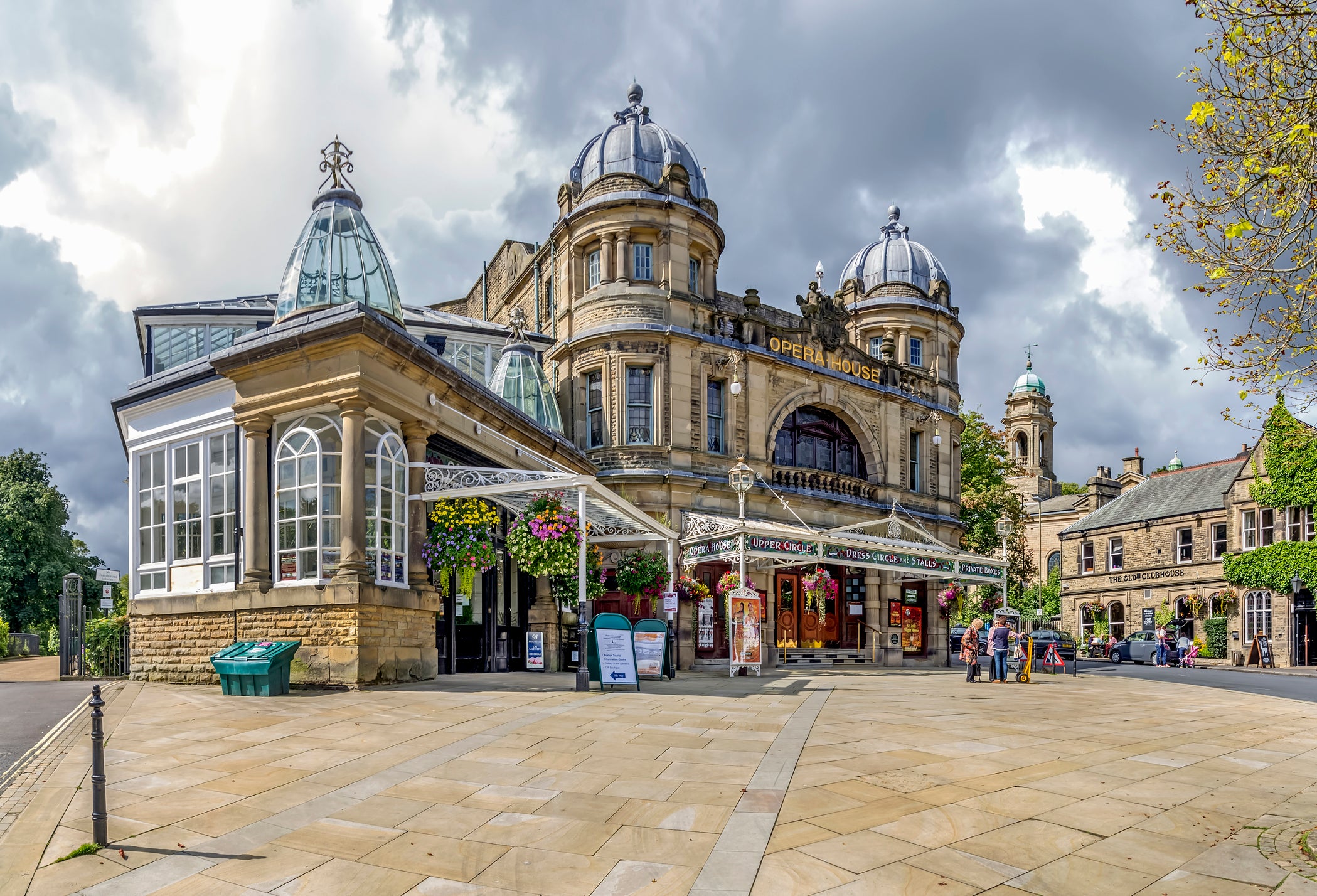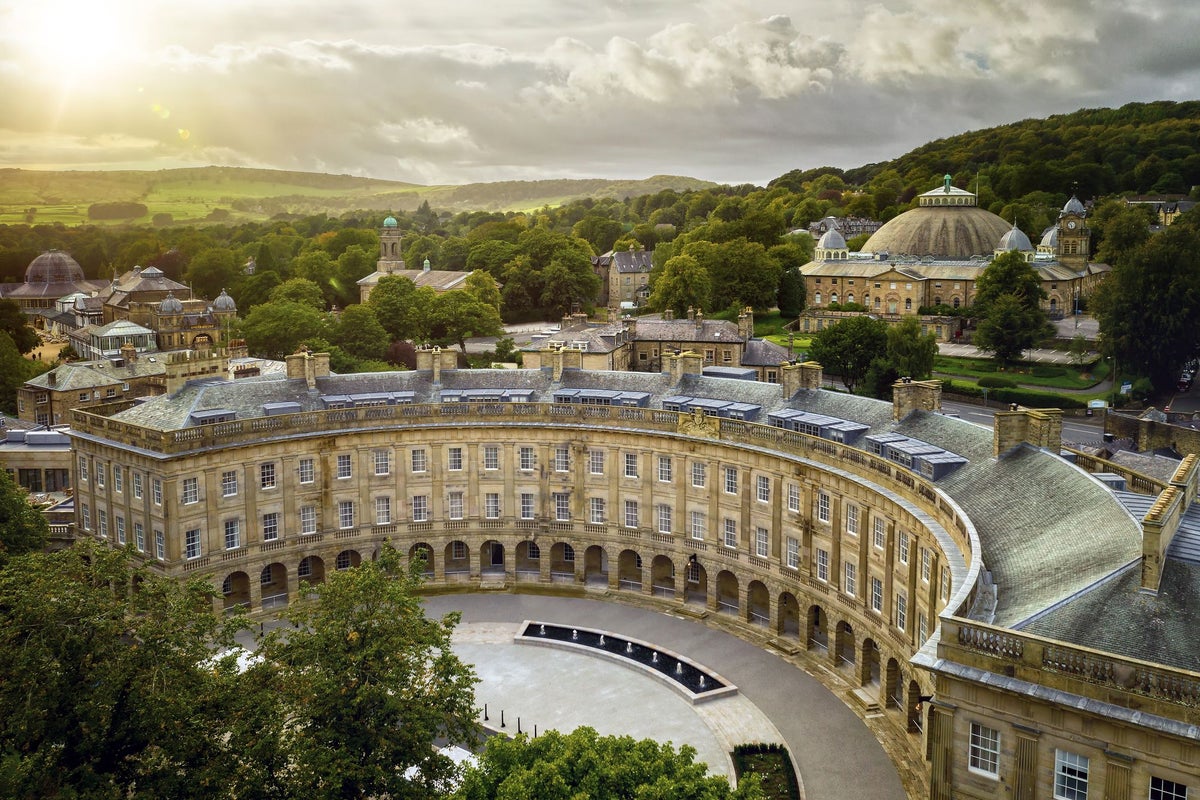It’s a gloriously sunny morning in Buxton, Derbyshire, yet as I approach St Ann’s Well to refill my water bottle, there’s no one around.
I’ve been a regular visitor to the town since I was child, particularly in summer, when wells across the Peak District are decorated with petals – a custom that dates back to pagan times.
As well as at Bath in Somerset, the Romans were attracted to the market town’s natural thermal springs – and they’re not the only ones.
Bath and North East Somerset is home to 193,400 people, but in 2023 it received 5.4 million visitors, resulting in congested roads, unofficial parking and air pollution from visitor coaches. And so in July, councillors lobbied the government for to introduce a visitor tax to combat overtourism.
Buxton, on the other hand, shares many of Bath’s attractions, yet its population is 20,048 and just 1.5 million people visited last year. Its elegant, Georgian architecture and healing natural springs makes it a perfect alternative for a weekend getaway – away from all the crowds.
A Roman holiday
When the Romans discovered a hot spring at St Ann’s Well around 50 CE, they founded Buxton, naming it Aquae Arnemetiae after a goddess.
Matthew Howarth, a programme manager at the Buxton Crescent Heritage Trust, says: “Both Bath and Buxton have origins as Roman spa towns built around natural thermal springs.
“Each featured baths and temples associated with water deities. These towns were seen as destinations for wellness and recovery, and Roman remains in both confirm the importance of the curative properties of the waters.”

Read more: The 10 best UK city breaks for a weekend trip in 2025
In Buxton, these include the roads leading into the town, pottery displayed at the library and subterranean bathhouse ruins.
In 1789, Buxton Crescent, an arc of hotels and homes, was constructed over the Roman remains (inspired by the equivalent in Bath). Natural mineral baths and the Grade II-listed Pump Room were also built on the site in the 19th century, with the latter now a visitor centre.
Today, St Ann’s Well feeds into the Ensana Buxton Crescent spa hotel, while visitors can find out more at the Buxton Crescent Experience.
Pride and Prejudice in the Peaks
The similarities between the spa towns do not end there, either. Jane Austen, whose relationship to Bath is notoriously complicated, loved the Peak District.
In Pride and Prejudice, antagonist Caroline Bingley says that “there is not a finer county in England than Derbyshire”, while the novel’s protagonist Elizabeth Bennet visits Chatsworth House, a 30 minutes’ drive east of Buxton.
It featured as her love interest’s home in the 2005 film Pride & Prejudice, starring Keira Knightley. Meanwhile, Lyme Park, 30 minutes’ drive north, stood in for Mr Darcy’s estate in the 1995 BBC series – it’s here that Colin Firth emerged from the lake.
To celebrate the 250th anniversary of the author’s birth, fans can attend Buxton Georgian Festival (23-28 Sep). The programme includes a Georgian market, a talk by historian Mark Dawson and an evening with Horrible Histories author Terry Deary.
.jpg)
Other highlights include tours on the diarist Anne Lister by costumed interpreters, plus calligraphy workshops, a ceilidh and a Regency ball.
“The ball has the live music of the period,” says organiser Matt. “Moves are called so people know how to dance to the music. Costume is preferred – you can hire period dress from speciality shops such as Farthingale.”
A cultural hotspot
A visit to Buxton doesn’t need to be limited to the autumn, though. The world-renowned opera house is at the heart of the town’s thriving arts scene, which flourishes throughout the year.

Read more: This new walking trail is the best way to see the Lake District without a car
Each summer, opera singers, artists and writers flock to Buxton International Festival (BIF) and Buxton Fringe Festival for a series of extraordinary cultural events. Performances of Verdi’s La Traviata, Caccini’s La Liberazione di Ruggiero and Viardot’s The Last Sorcerer are already confirmed for next year’s BIF.
Elsewhere, the Pavilion Arts Centre is home to a 360-seat cinema. Octagon Hall hosts regular tea dances, exhibitions and fairs, and there’s always something going on at The Gallery in the Gardens – I’ve had many serendipitous encounters with local artists there.
When it’s time to eat, stock up on Buxton pudding in the Pump Room or Derbyshire oatcakes at Buxton Markets (which, at 1032ft above sea level, is the highest in England).

For something more refined, try the 1789 restaurant at Ensana Buxton Crescent– I’ll never forget its dark chocolate and hazelnut torte – or next door in Old Hall, England’s oldest hotel, where Mary, Queen of Scots once stayed.
With its buzzing cultural scene, restorative Roman baths and impressive Georgian connections, it’s remarkable that Buxton feels so intimate. Perhaps it’s time, then, to pull the plug on Bath, and swap it for this charming, crowd-free town instead.
Where to stay
Double rooms at the Ensana Buxton Crescent cost from £185 per night, including breakfast and use of its mineral-rich pools.
Alternatively, double rooms at the more affordable Old Hall Hotel start at £99 per night with breakfast.
How to do it
Direct Northern trains from Manchester Piccadilly to Buxton take an hour.
Direct Avanti West Coast trains from London Euston to Macclesfield take two hours; from there it’s a 25-minute drive to Buxton. Local firm Top Cars offers reasonable rates.
Sarah travelled as a guest of Avanti West Coast and Ensana Buxton Crescent.



